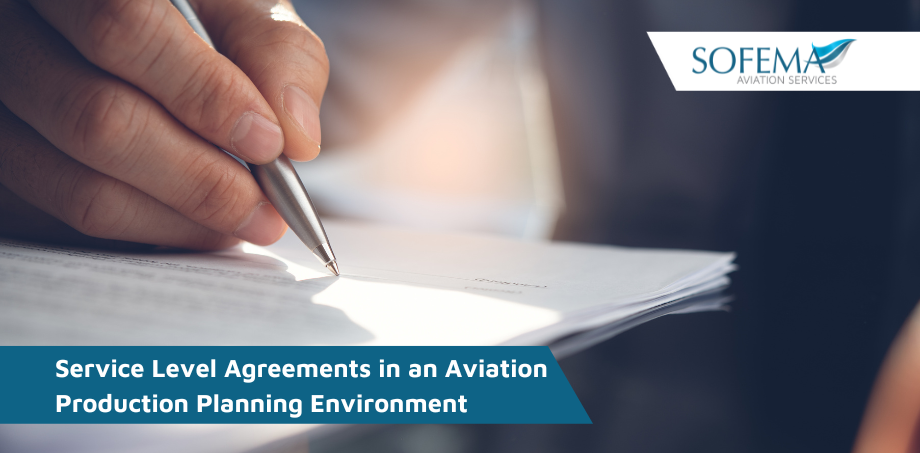Sofema Aviation Services (SAS) www.sassofia.com considers the essential attributes of a Service Level Agreement and how it can benefit the production planning process.
Introduction – What Are Service Level Agreements?
A Service Level Agreement is not a formal contract it is actually a set of working processes and procedures which are developed to ensure clear definition as well as balance related to timescales of the core objectives and deliverables (SLA have the potential to drive the quality of a relationship).
Essentially it is a documented agreement specifying deliverables in either qualitative or quantitative terms, moreover, it identifies expected and agreed timescales and remedial actions in the case of underperformance.
Note Service Level Agreements are essentially voluntary and cannot be imposed
- An SLA is unlikely to be successful if it is created as an imposition (which means you are being told what to do!)
- If you insist on the other person’s behaviour as a mandatory obligation there will often be reluctance or pushback in some way.
- For an SLA to succeed, both parties must have a say in creating the structure which underpins the agreement terms.
- A SLA is not a quick solution to a perceived problem, in fact, a rushed arrangement will often backfire and undermine the potential value of a well-thought-out and executed agreement.
A service level agreement will identify the method of providing oversight as well as the process for resolution of any issues. Typical Aspects include :
- Quality Control
- Service Availability
- Measure of Satisfaction
SLA Development
Consider the following steps to support the process of developing your Service Level Agreement:
- Define the activity you want to manage – Identify the scope & purpose of service as well as all key information together with any dedicated business processes. Consider any impact of service loss, Create a shared understanding of the importance of effective delivery
- Determine what you can measure (Delivery is an essential part of the process and can be in terms of milestone or timescale or related to calendar controls)
- Describe your specific business need as well as the metrics you will use (Take care to use metrics which ensure a fair and positive outcome)
- Agree on the baseline service targets or deliverables
- Decide on how you will monitor and review performance If possible include both the minimum & expected levels of service
Note – the “expected level” is what we have agreed whereas the “minimum level” is the threshold of borderline unacceptable service.
- Determine your reporting procedures
- Identify the owner of the SLA
- Now to prepare the service agreement document
- Review the document with all concerned parties (revise as required)
- Obtain approval of all the parties involved
Escalation Procedures
It is important to identify the steps to address any issues which have impacted the service levels including the causal factors for underperformance and the reporting time and the problem resolution within a specified time.
Activate the SLA
Publish and employ the SLA effective from a mutually agreed date.
Consider periodic review sessions with all stakeholders any time there are critical changes to the business operation including:
- Environment changes
- Changes to needs or expectations
- Changes to Workload change
Next Steps
Follow this link to our Library to find & Download related documents for Free.
Sofema Aviation Services (SAS) www.sassofia.com and Sofema Online (SOL) www.sofemaonline.com offer multiple Production Planning & Maintenance Planning EASA Regulatory Compliant & Vocational Training. Please see the websites or email team@sassofia.com
Tags:
aviation, aviation courses, Aviation Production Planning, Online courses, Production Planning, SAS blogs, Service Level Agreement, Service Level Agreements (SLA), SLA, Sofema Aviation Serices




